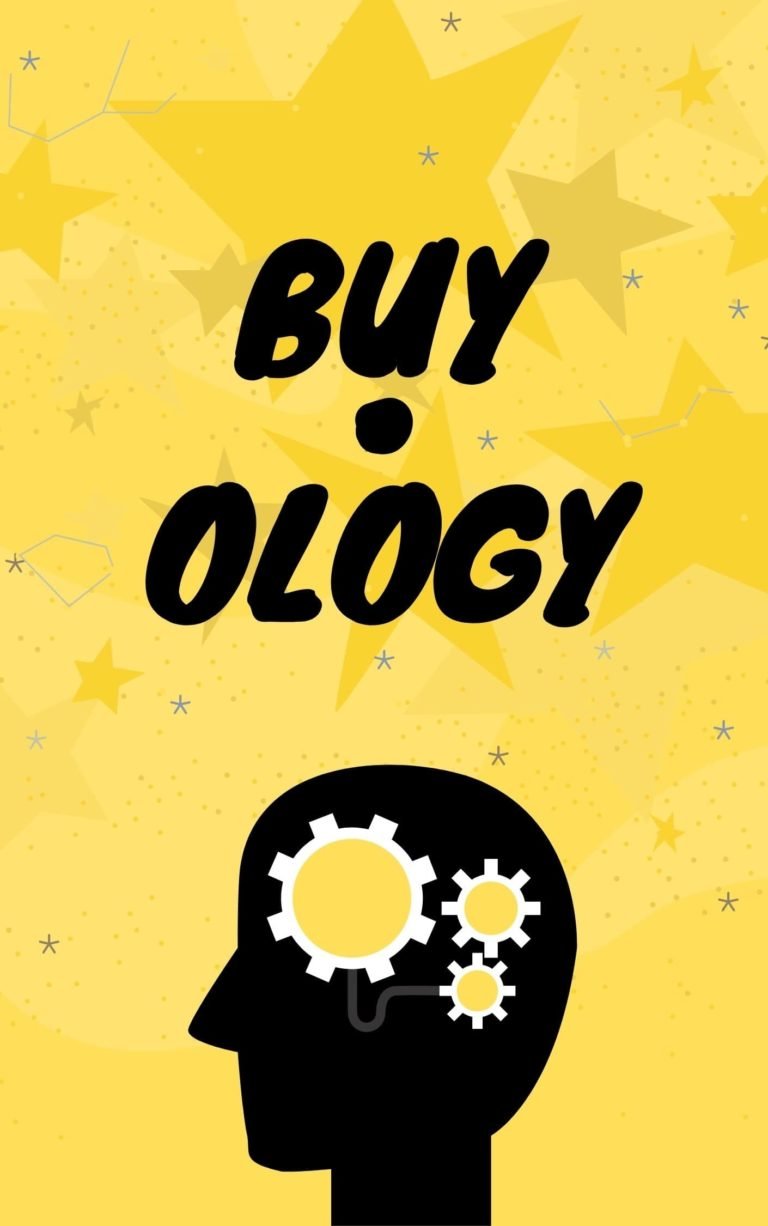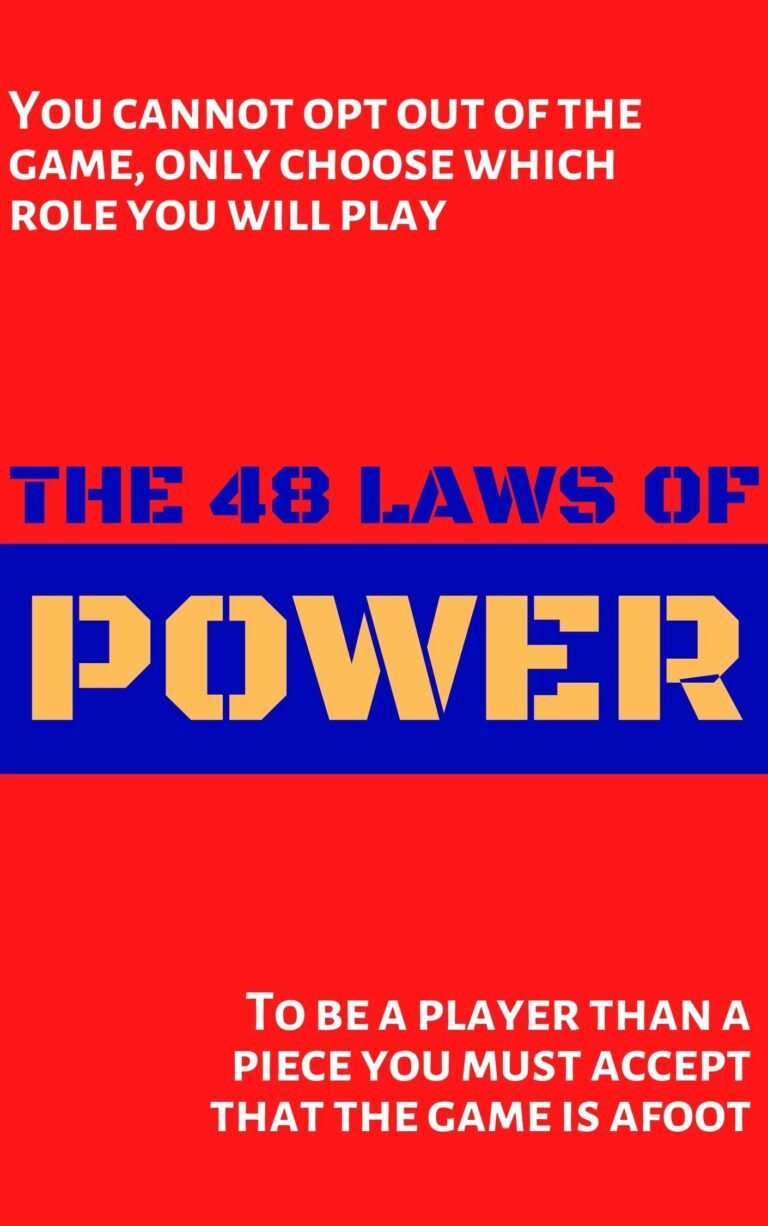The 7 Habits of Highly Effective People
Stephen Covey
Rating: 8.2
“Every so often a book comes along that not only alters the lives of readers but leaves an imprint on the culture itself. The 7 Habits is one of those books.”
-Daniel Pink, author of Drive and To Sell is Human
In the pursuit of personal effectiveness, most people try to change one of two things: their behavior (“I’m going to try really hard at this!”) or their attitude (hence the popularity of self-help books and motivational speakers). If you’ve tried these approaches, you know them to be ineffective. The only solution for real change is the recognition and changing of your personal “paradigm,” or pattern of perception by which you view the world. The first three habits are habits of self-mastery or private victories. These habits must come first, after which come the second three habits of public victories. The last habit is one that is key to the proper functioning and renewal of the first six.
Contents
Habit 1: Be Proactive
Put aside the dictionary definition of the word “proactive” for a moment, as well as any meaning you’ve learned to attribute to it from your time in the workforce. You’ll have to do this with several of the upcoming habit titles to understand what Covey is saying.
“There is a gap between stimulus and response and the key to both our growth and happiness is how we use that space.”
The best way to understand what a paradigm is, as well as which paradigm an effective person possesses, is to first understand the three widely accepted paradigms that most people use to explain human behavior:
- Genetic determinism (you are who you are because of your genes)
- Psychic determinism (your childhood and upbringing shaped your personality), and
- Environmental determinism (the things around you make you who you are)
The prevailing viewpoint is that at our core, we are animals, compelled by a given stimulus to give a certain response. While there is certainly some truth to this, Covey quotes psychiatrist and Holocaust victim Victor Frankl: “Between stimulus and response, man has the freedom to choose.” (See Frankl’s book Man’s Search for Meaning for his story.)
The author defines proactivity (and the paradigm shift that comes with it) as exercising your freedom to choose self-awareness, imagination, conscience, or independent will in between stimulus and response. If you’re unhappy, unsuccessful, etc., it’s because you chose to let something make you that way instead of choosing your response. This is not to minimize the effect that genetics, upbringing, or environment have on who a person is; however, being an effective person requires that you recognize your responsibility to shape your response to those things.
This is not just positive thinking; being proactive means understanding the reality of a situation, but understanding the reality of a situation also means understanding the reality that you can choose your response to your circumstance. We all have a “circle of concern,” representing all the things that we care about. We can only influence a small portion of the things in our circle of concern, and many people spend their time and energy worrying or complaining about the things they can’t control. The more you focus on things outside your control, i.e. outside your “circle of influence,” the fewer things you’ll be able to control. Your circle of influence will shrink. In contrast, by focusing only on those things within your control, you will find that your circle of influence will grow.
Habit 2: Begin with the End in Mind
Everything is created twice: first in a mental creation, then as a result becoming a physical creation. If you don’t consciously choose to control the mental creation, the vicissitudes of your life are created by default, shaped by random circumstances and other people’s expectations and agendas. (Refer to the summary of Think and Grow Rich by Napoleon Hill to better understand what this means, and to learn how to shape your actions based on this principle.)
If your ladder is not leaning against the right wall, every step you take gets you to the wrong place faster.”
Said another way, Habit 1 is “You are the creator.” Habit 2 is the first creation.
Beginning with the end in mind means approaching any role you have in life with your values and directions clear. Because we are self-aware, we can realize when we are acting in a role that isn’t in harmony with our values or isn’t a result of our own proactive design.
Whatever is at the center of your life will be the source of your security (your sense of worth), guidance (your source of direction in life), wisdom (your perspective on life), and power (your capacity to act and accomplish).
Most people never take the time to align their values with their center. As a result, they have one or more of many possible alternative centers. People can be spouse centered, family-centered, money centered, work-centered, pleasure centered, friend or enemy, centered, church-centered, or self-centered. You probably know someone who is an example of being centered around each one of these things, and if you’re honest with yourself, you’ll realize that there are probably times when you become centered around many of these things as well.
“The important problems we create cannot be solved at the same intellectual level as the one we have at the time of their creation”
Albert Einstein
Many of these things are perfectly good in and of themselves, but it isn’t healthy for your security, guidance, wisdom, or power to depend on and be determined by any of them. Instead, to be an effective person we need to have a “principle” center – one that is based on timeless, unchanging values. The principle center will put all these other centers in perspective.
Covey puts it this way: “The personal power that comes from principle-centered living is the power of a self-aware, knowledgeable, proactive individual, unrestricted by the attitudes, behaviors, and actions of others or by many of the circumstances and environmental influences that limit other people.”
The best way to make sure your life is aligned with your principles (and the best way to track when you get off center) is to write a personal mission statement. Covey doesn’t present a cookie-cutter formula for doing so, but suggests approaching it from the perspective of roles and goals: who do you want to be, and what do you want to accomplish?
“Between stimulus and response, man always has the freedom to choose the nature of his response”.
This principle is the same for families or organizations; as hokey as it might sound, an authentic mission statement is the first step in the process of being effective. You need to put in the time, though, and effort to gain the right perspective, and to set yourself up for the next habit.
Habit 3: Put First Things First
Habit 3 is the second creation–the physical realization of Habits 1 and 2. Habits 1 and 2 are best characterized as “leadership,” which must come first, while Habit 3 is where we begin discussing “management.”
We are the product of what we repeat. Excellence is not an attitude, but a habit. “Plant a thought, harvest an action! Sow an action, reap a habit! Sow a habit, reap a character! Plant a character, harvest a destiny!”.
Effective management means putting first things first and doing the things that other people don’t want to do. From Habits 1 and 2, you must have a burning “yes” inside you that allows you to say “no” to other things that don’t align with your principles and goals.
Covey describes four levels of time management:
- Notes and checklists (reducing your cognitive burden in the present).
- Calendars and appointment books (looking ahead to better arrange your future time).
- Daily planning, by means of goal-setting and prioritization. Most people never get beyond this level.
- Categorization of activities and purposeful focus on and/or exclusion of certain ones.
This fourth level is where the author asks us to operate. An effective time manager spends as much time as possible in quadrant II, doing things that are important before they become urgent: building relationships, long-term planning, preventative maintenance of all types, etc. The more time you spend in this quadrant, the less time you will have to spend in quadrant I. Delegate or otherwise cut out anything in quadrant III or IV.
In contrast, most people spend the majority of their time in quadrant I and III, doing urgent things that may or may not be important, and rarely allow you to be effective. Most of us try to get out of this vicious cycle by trying to be more disciplined; however, the author contends that your problem is probably not that you lack discipline. More likely, it is simply that your priorities have not been rooted in your values.
“Successful people are used to doing things that those who have failed don’t like to do! Sometimes they do them without passion, but their reluctance is overcome by their desire to succeed!”
To become a quadrant II self-manager, Covey suggests a series of four steps:
- Identifying roles. Write down a list of roles that you wish to devote time and energy to fill. Some examples are your role as an individual (for which you would devote time for self-improvement), your role as a family member (spouse, son, mother, etc.), and your role at work (which may be multiple things, any of which may not correspond to your official title).
- Selecting goals. Write down one or two goals for each role that you want to accomplish over the next week. Since you’ve already gone through the process of establishing Habits 1 and 2, these goals should be tied into your larger purpose and long-term goals.
- Scheduling. Take things a step beyond where most people get with their use of scheduling, sit down, and plan out your schedule a week at a time. This allows you to match your goals with the best time to accomplish them. For example, peak productivity for most people is between 2 – 5 hours after waking. One use of this principle might be to schedule time 2 – 5 hours after waking on Saturday to do the most important quadrant II activities that your job won’t allow you to do during the week.
- Daily adapting. Take a few minutes at the beginning of each day to review the schedule you put together and revisit the values that induced you to establish your goals for the day. In real life, things change, so it is important to allow your schedule to be fluid and adaptable while keeping your focus on your values and priorities.
Habit 4: Think Win/Win
This is another buzzword-type title that will require you to put aside your perception of the term to grasp Covey’s meaning. As opposed to some kind of unrealistically happy and friendly attitude, the author defines thinking win/win as a mindset that is always looking for a third alternative to the “me or you” decision. Most people live in one of the following four alternative paradigms:
- Win/lose (authoritarian or egotistical)
- Lose/win (being a pushover)
- Lose/lose (when two win/lose people interact)
- Win (focused solely on the results you get for yourself)
To escape these unproductive mindsets, we must develop the three character traits essential to the win/win paradigm:
- Integrity (the value we place on ourselves)
- Maturity (the balance between courage and consideration)
- Abundance mentality (which comes from a sense of personal worth and security)
Try thinking about your relationships as an emotional bank account. By proactively making deposits, you ensure that the emotional funds will be there when the time comes to make a withdrawal. Win/win is often difficult but is made much easier by the presence of a hefty emotional bank account.
The breadth of opportunity controls their thought process. The success of one will not be at the expense of the other. There’s enough for everyone. There is always a third and better alternative.
So we can better understand what a win/win decision is and how it is structured, Covey provides the following characteristics:
- Clear identification of desired results
- Specified parameters within which to achieve those results
- Resources to be used to accomplish the results
- Accountability by means of specific standards of performance and times for evaluation
- Consequences of the results of the evaluation
You can find a more thorough presentation of this approach to effective negotiations in Getting to Yes by Roger Fisher and William Ury. The essence of Getting to Yes is to separate the person from the problem, focus on interests instead of positions, invent options for mutual gain, and insist on objective criteria.
The key to this chapter is that in most difficult situations, the problem is the system, not the people. By approaching those situations with the question of how we can change the system to make it work for all involved, many difficult problems can be resolved.
Habit 5: Seek First to Understand, Then to Be Understood
If you want to interact effectively with people and influence them, you must first understand them. It may be common sense, but it stands in direct contrast to most people’s modus operandi, which is to be first concerned with being understood.
The principle of empathic communication:
“The heart has its reasons that reason does not know”.
“To touch a man’s soul is to walk on sacred ground!”
Again, Covey breaks things down into a step-by-step framework that makes your behavior easier to understand. Here are his four levels of listening:
- Ignoring
- Pretending to listen
- Attentive listening
- Empathic listening
The first three are self-explanatory, but you may not have heard the term “empathic listening” before. Empathic listening means getting inside someone else’s frame of reference by “listening” to their body language, tone, expression, and feelings. It’s a tremendous deposit in the emotional bank account.
In contrast to empathic listening, we tend to listen from our frame of reference (even if we are listening attentively) and have these “autobiographical responses”:
- Evaluate (agree or disagree)
- Probe (ask questions from our frame of reference)
- Advice (give counsel based on our own experience)
- Interpret (explain people’s actions based on our motivations)
By listening empathically instead of forcing our natural autobiographical responses onto each situation, we can get beyond a surface-level, transactional exchange and have a real impact. Needs stop motivating people once those needs are satisfied. Satisfy the need to be understood, and you can move on to being productive.
The other half of this habit, then, is being understood.
Covey refers to the Greek philosophy of ethos, pathos, logos – first character, then relationships, and only afterward the logic of what you’re saying. Most people try to skip straight to logos in every exchange, but it can’t be denied that someone must first trust you and understand where you’re coming from emotionally before they will understand how your logic fits into the overall picture of your perspective. Approach your communication through this framework, and you’ll be surprised at how much more easily you get your point across.
This habit is powerful because it is always in your circle of influence to seek first to understand, then to be understood. When people understand each other, the door is opened for third alternatives – win/win solutions.
Habit 6: Synergize
Despite being entitled to the business world’s most eminently cringeworthy king of buzzwords, this chapter offers enormous value if you can grasp the principle. Covey is not referring here to the type of “synergy” that occurs when two companies merge and become better together by cutting down on administration costs. He’s not even referring only to the simple act of working together to accomplish more than what you could accomplish on your own.
Synergy defies mathematical laws. It is defined as follows: The whole is greater than the sum of its parts! 1 plus 1 is equal to 3 or more!
What the author means by synergy is something that may be impossible to understand unless you have experienced it. One way to describe it is when a group of people enter a simultaneous and cooperative state of flow – the “peak experience” of group interaction.
You may have had experience playing sports where the team just gelled and the plays started clicking like you were moving as one body. Perhaps you’ve played in a musical group and found yourselves in a song where every note was perfect, every hook was tight, and you found yourself improvising riffs you didn’t even know you were capable of playing. You might have been in an emergency situation where a group of strangers came together to act with a degree of cooperation that seemed unprecedented.
“If a person disagrees with you, there must be a reason behind it that you don’t yet understand. So take time to see things from his point of view!”
Maybe you’ve had one of those conversations with a group of close friends where you were baring your souls about some deep, commonly held belief or commonly faced challenges, and each person’s words create thoughts in your mind that you then perfectly expressed as insights you didn’t even know you had.
This is what the author means by synergy – a shared peak experience that can be created as the culmination of the first five habits. The key here is that synergy of this type doesn’t have to be a rare experience. We can create it in our everyday lives, beginning to live at a higher level by putting the first five habits into practice and adding a courageous amount of authenticity and openness. To be able to consistently operate at this level is to achieve the ability to be more effective than most people can even dream of being.
Habit 7: Sharpen the Saw
Remember, these are all intended to be habits, which means they have to be practiced repeatedly. To be able to practice these things, you need to take the time to renew yourself.
Covey recommends you carve out the time to do things to renew what he classifies as the four dimensions of human nature:
- Mental (reading, visualizing, planning, writing)
- Physical (exercise, nutrition, stress management)
- Emotional (service, empathy, synergy, intrinsic security)
- Spiritual (value clarification & commitment, study & meditation)
When you neglect any one area, you damage the rest – so commit at least one hour of every day to these practices.
Covey doesn’t spend enough time on any of these things to be the best “how-to” source for their implementation, and I don’t think that was his intention. His point is that an overall balance is necessary to support the other six habits. If done correctly, it leads to a virtuous cycle of continual personal growth.







One Comment